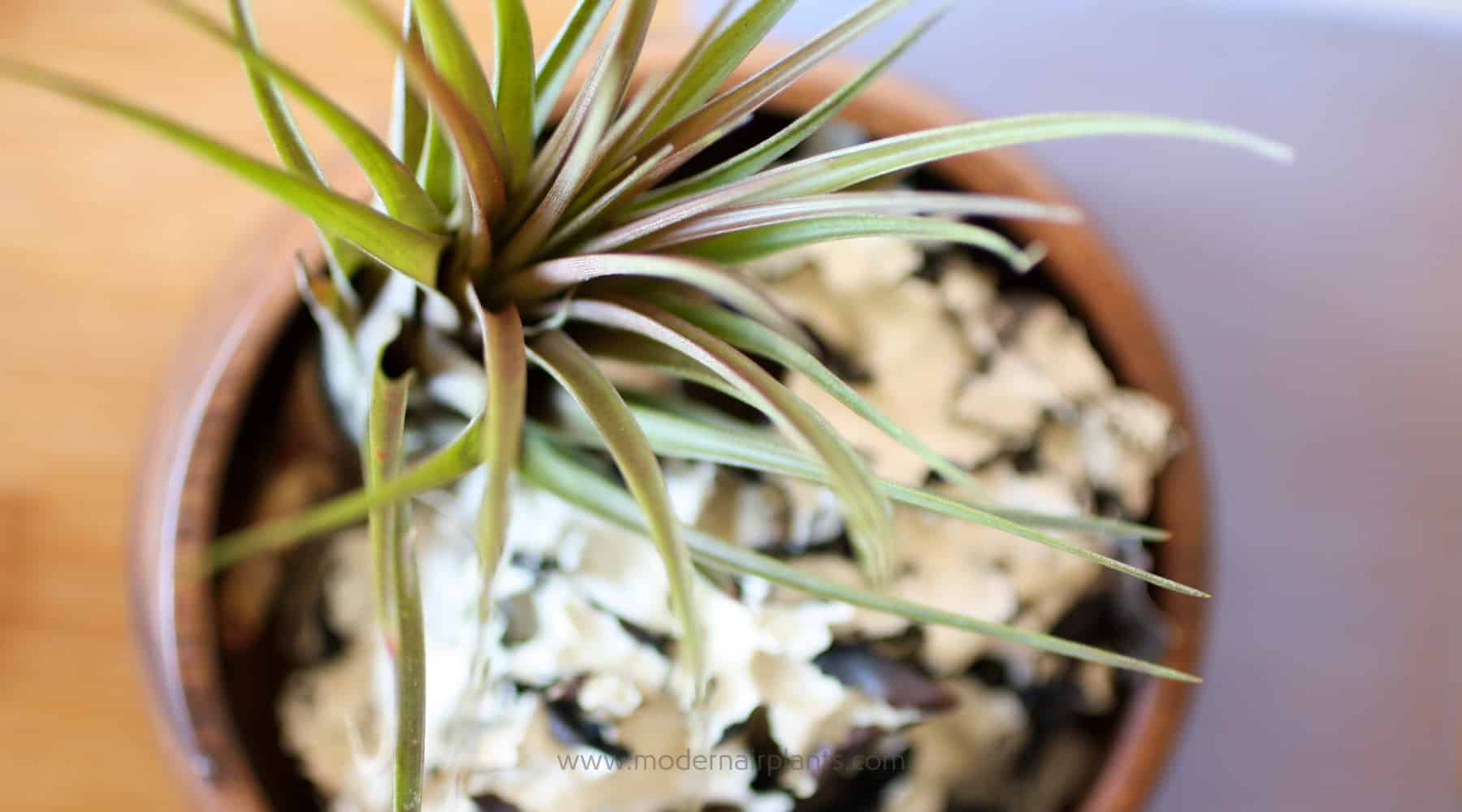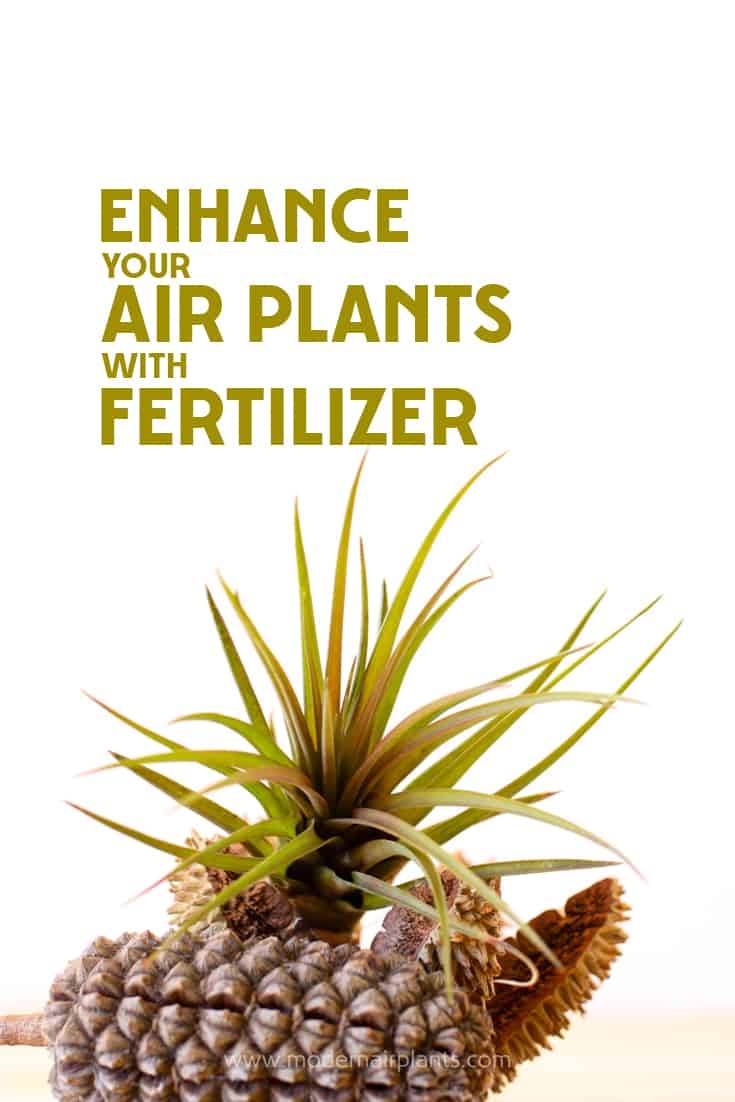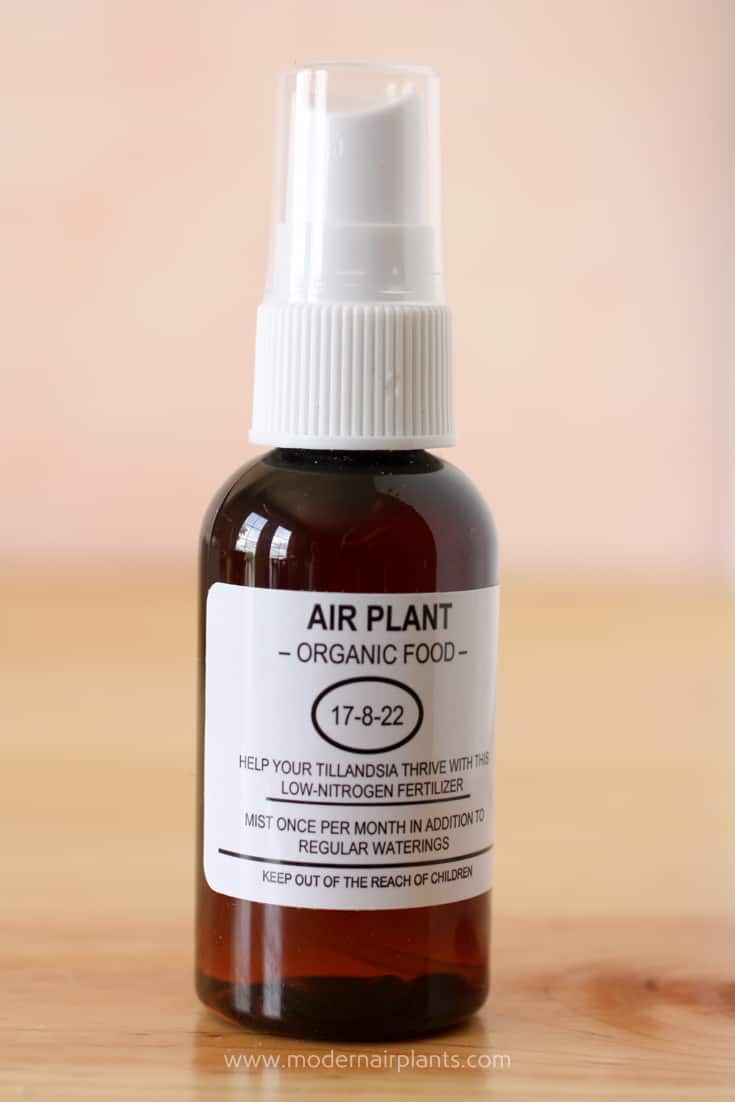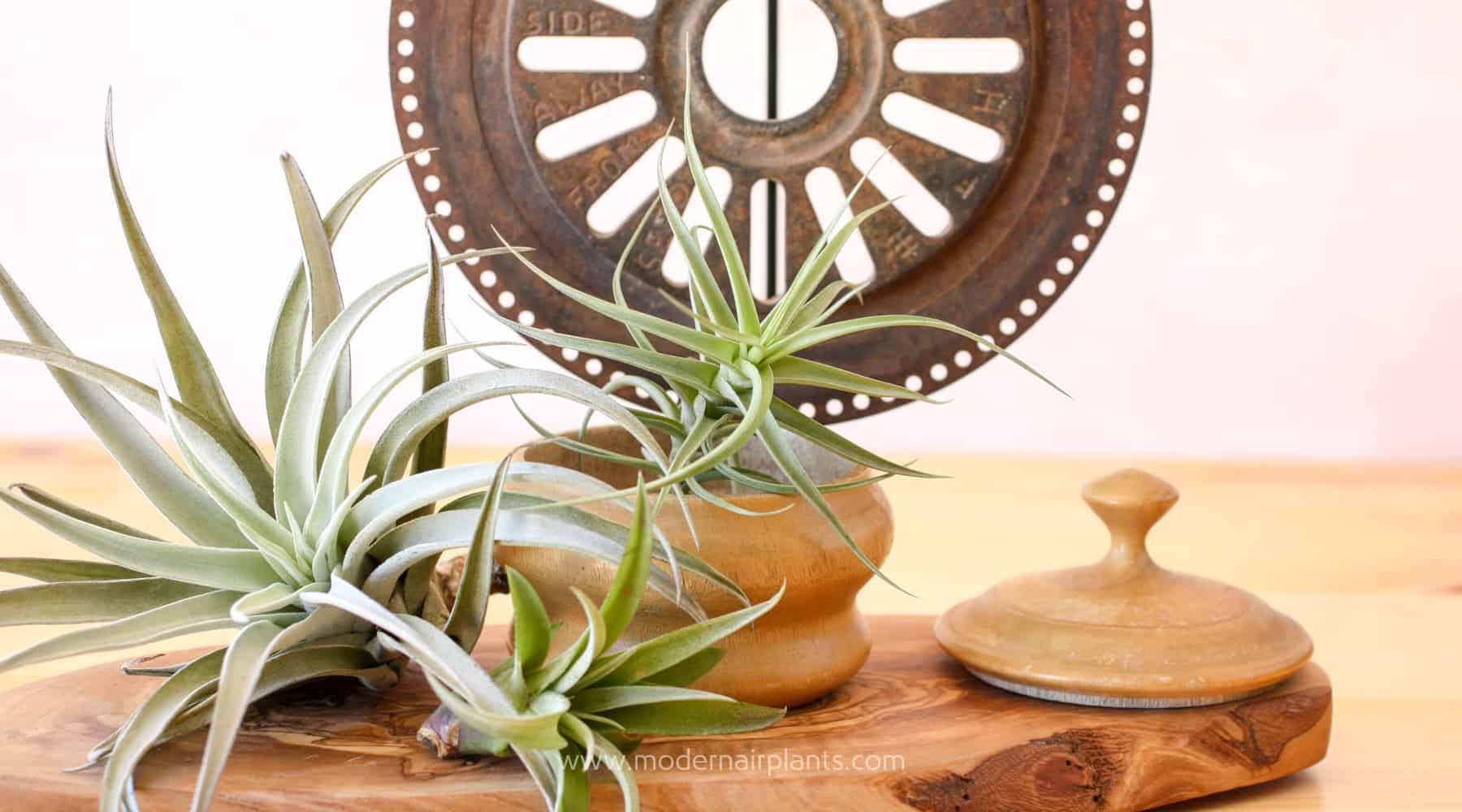
supercharge your air plants
Air plants are slow growing plants, but you can give yours a boost that will assist your air plants in producing pups (babies) and colorful flowers.
This post may contain affiliate links, and I love all the products I promote.
Fertilizer
For more growth and more flower color, as well as overall health, start fertilizing your air plants–with a light hand. Air plants can be easily burned by too much fertilizer and not all fertilizer will work for air plants. Use a fertilizer made specifically for Tillandsia. Be sure to use a non-urea nitrogen fertilizer as this type of fertilizer depends on bacteria in the soil to break down the nitrogen into a usable form. Since air plants absorb their nutrients directly through trichomes on their leaves this type of fertilizer will harm air plants. Also avoid fertilizers containing boron, copper or iron, which are toxic to air plants.

Break It Down
Fertilizers contain 3 main components: nitrogen (N), phosphorus (P), and potassium (K). Nitrogen promotes healthy leaves, phosphorus encourages flowering and potassium supports overall plant health.
These nutrients are represented as an NPK percentage. A label reading 17-8-22 contains 17 percent nitrogen, 8 percent phosphorus, and 22 percent potassium. Recommended strength is to use 1/4 teaspoon or 1/4 strength per gallon of water, whichever is less.

Best Fertilizer Options
When fertilizing air plants, I suggest using a fertilizer formulated specifically for tillandsias or bromeliads. This will help you to avoid elements which are toxic to air plants but commonly added to most fertilizers. Choose between a pre-mixed spray fertilizer or a granular fertilizer.
Spray Fertilizer
If convenience is your top priority, go with a spray fertilizer. It is the easiest option as the fertilizer is pre-mixed and ready-to-go. Be sure to spray all side of the plant.
Granular Fertilizer
To get the most fertilizer for your money, go with a granular fertilizer. Add the prescribed ratio of fertilizer to the water. To economize, even more, save and re-use the water containing fertilizer. Label the water as fertilizer water, so it is not confused with other water.
Tip: To avoid fertilizer burn, fertilize once a month after watering, then monitor your plants to gauge your plants’ reaction to the fertilizer.
If you use a water soluble fertilizer, simply add the fertilizer to the water. Once the fertlizer has dissolved add the air plants.
Be Wise
Remember, air plants will live a long time without fertilizing, but too much fertilizer will burn or kill an air plant, judicious fertilizing, no more than once per month, will encourage growth and flowering.


